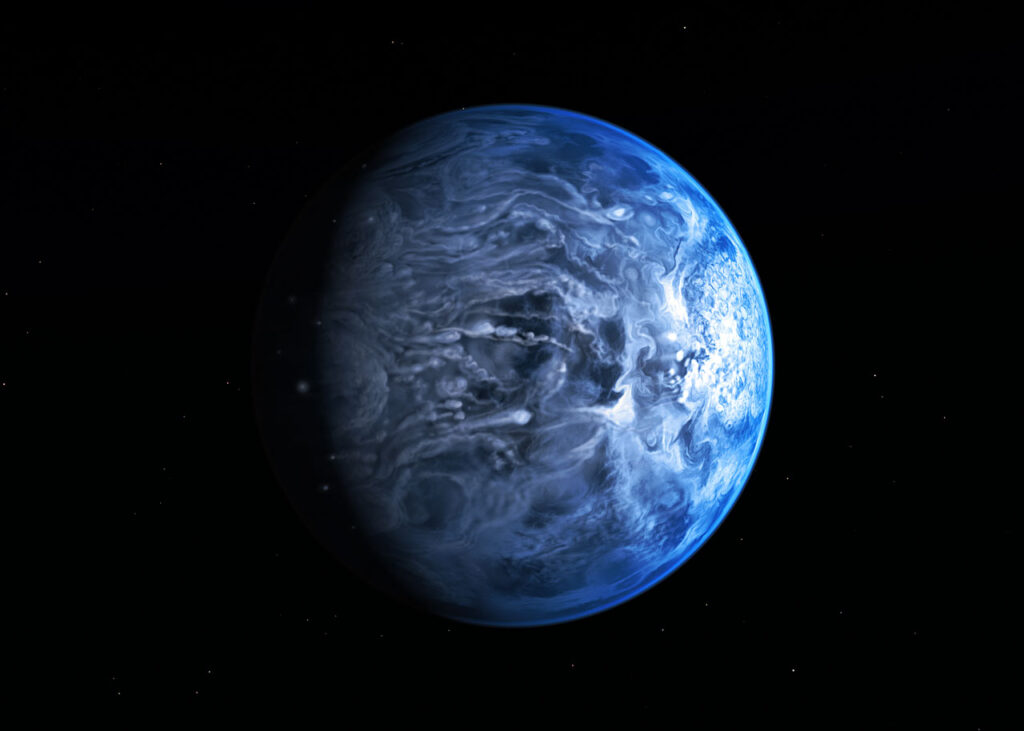
planet rain glass
HD 189733b is one of the most extreme exoplanets ever discovered. Located about 64 light-years away in the constellation Vulpecula, this gas giant is known for its violent atmosphere and unusual weather patterns. Instead of water, the planet is believed to experience rain made of molten glass, blown sideways by winds moving faster than 7,000 kilometers per hour. The combination of intense heat, high-pressure winds and atmospheric particles creates one of the most hostile environments in the known universe.
What Causes Glass Rain on HD 189733b
The planet orbits extremely close to its parent star, completing a full orbit in just 2.2 Earth days. Because of this proximity, surface temperatures can exceed 1,000 degrees Celsius. At these temperatures, silicate particles vaporize and condense in the upper atmosphere. When they cool slightly, these particles form tiny droplets of molten glass. Powerful winds then push the glass droplets horizontally rather than allowing them to fall downward.
This phenomenon gives the planet its signature deep cobalt blue appearance, which is caused not by oceans or water but by the way silicate particles scatter light in the atmosphere.
Why HD 189733b Is So Dangerous
- Wind speeds can reach up to 7,000 km per hour
- Temperatures are hot enough to vaporize metals and minerals
- The atmosphere is filled with silicon-based particles
- The planet is likely tidally locked, creating extreme temperature differences
- No solid surface exists due to its classification as a hot Jupiter
These conditions make the planet completely uninhabitable and more violent than any storm system observed on Earth.
How Scientists Discovered the Glass Storms
Astronomers used spectroscopy to study how light behaves as it passes through the planet’s atmosphere. By analyzing light absorption patterns, scientists identified signatures of silicate particles and high-temperature materials that indicate glass formation. Combined with atmospheric models, this data suggests the presence of high-speed winds and sideways glass rain.
What Makes the Planet Blue
HD 189733b is famously known for its bright blue color. While the hue resembles a calm ocean planet, the truth is more chaotic. The blue tint results from how vaporized silicates scatter blue wavelengths of light, similar to how Earth’s atmosphere scatters sunlight but on a much harsher scale.
Why HD 189733b Matters for Space Research
Studying this planet helps scientists:
- Understand atmospheric chemistry in extreme conditions
- Learn how hot Jupiter exoplanets evolve
- Develop better models for wind and heat distribution in alien worlds
- Improve detection techniques for future habitable exoplanets
The data gathered from HD 189733b may not point to a habitable world, but it opens doors to understanding how planets form, survive and react under intense stellar radiation.
HD 189733b is a stunning example of how alien planets can push the limits of physics and weather as we know it. With glass shards carried by supersonic winds and temperatures hot enough to melt rock, it stands as a reminder of how diverse and extreme the universe truly is. While life there is impossible, the knowledge gained from studying such planets brings us closer to understanding our place in the cosmos.



